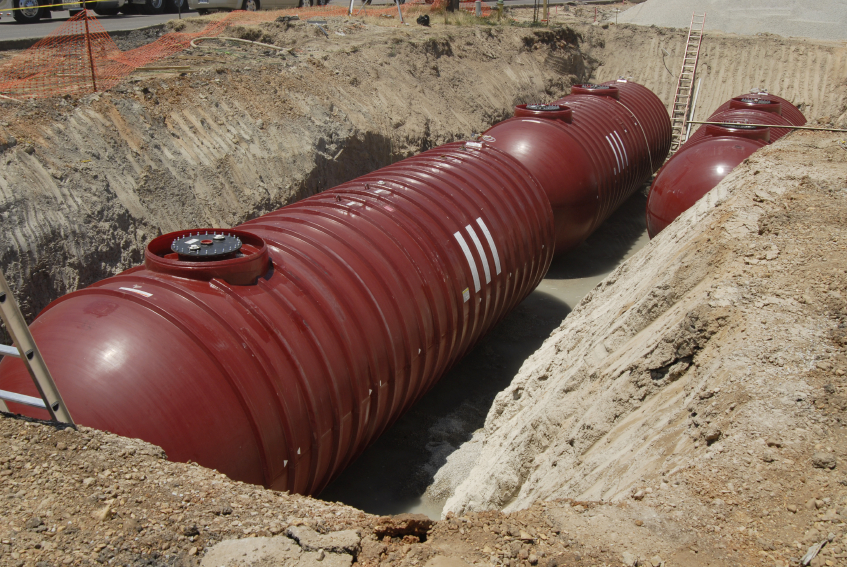 |
After a Flood
If your UST has been in a flood, take the following actions, depending on site-specific conditions:
- Do not assume everything is OK because water didn’t actually flood over the station. The water table could have risen and caused problems.
- Make sure the power to any UST-related equipment is off (such as power to the dispensers, pumps, release detection equipment, and other devices).
- Determine if product leaked from the UST.
- Determine if water or debris entered the UST.
- After inspecting the electrical system, return power to the UST system.
- Check the release detection system for proper operation. Perform release detection again, as soon as possible after the flood.
- Check all equipment, including pumps, shear valves, fill pipes, and vent lines, for proper operation.
- Clean and empty spill buckets and sumps, including those under the dispensers and above the tanks. Inspect the piping and fittings for damage and possible leaks.
- Perform a UST system tightness test to ensure integrity before adding product.
- Test spill buckets and sumps to ensure they are tight.
- Test cathodic protection to ensure it is operating properly.
- Use daily inventory control and monthly reconciliation if the electronic method of leak detection is not operating. The EPA provides guidance and log sheets for daily inventory control and monthly reconciliation.
- Perform daily checks for water with water-finding paste for several days until the owner determines the system is tight.
- Empty tank contents and stop using the tank if water checks indicate excessive water or daily inventory control shows loss of product.
- Notify the appropriate implementing agency as soon as possible.
Forget expensive calls to lawyers and consultants. With Enviro.BLR.com, you get instant access, 24/7. Try it out today and get the 2015 EHS Salary Guide, absolutely free. Download Now.
Floating Tanks
The tank may float out of its original backfill site if it is not adequately anchored. If this occurs, the following actions are in order:
- If there is evidence of spilled product, notify the appropriate authorities according to applicable policies.
- Notify the local fire department.
- Turn off any power in the vicinity of the tanks and piping, and immediately call the electric company if any power lines are down in the area.
- Rope off and keep people away from the affected area.
- Remove all contents of the tank.
- Perform initial leak mitigation and release reporting, if necessary.
- Obtain a contractor to dismantle any piping and/or dispensers, and remove the piping and tank properly.
Everything You Need for Environmental Compliance
Enviro.BLR.com puts everything you need at your fingertips, including practical RCRA, CAA, CWA, hazardous waste regulatory analysis and activity, news, and compliance tools. Try it at no cost or risk and get a FREE report.
